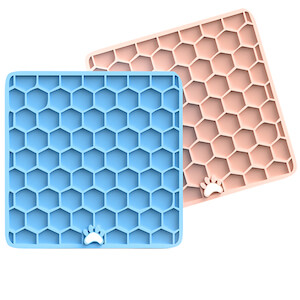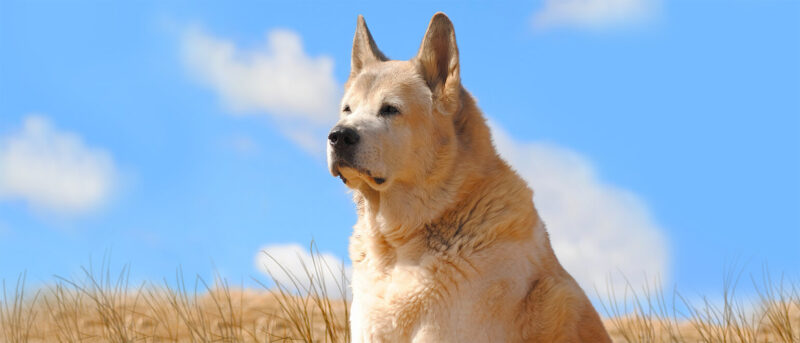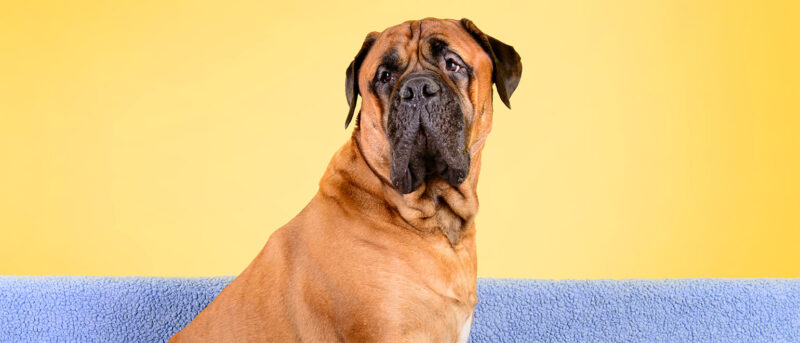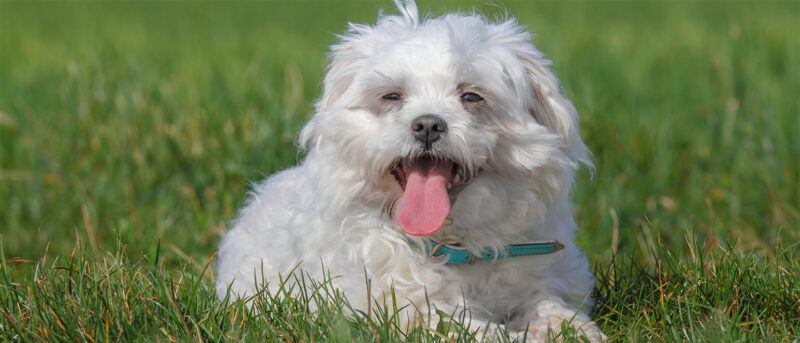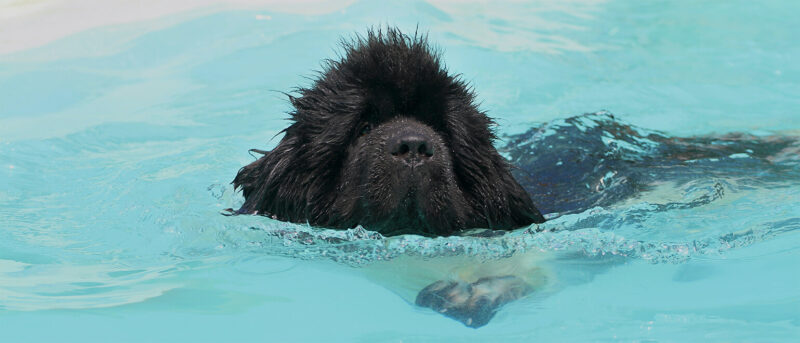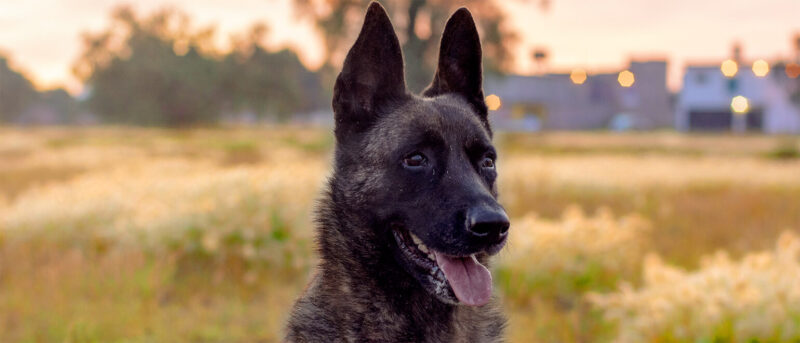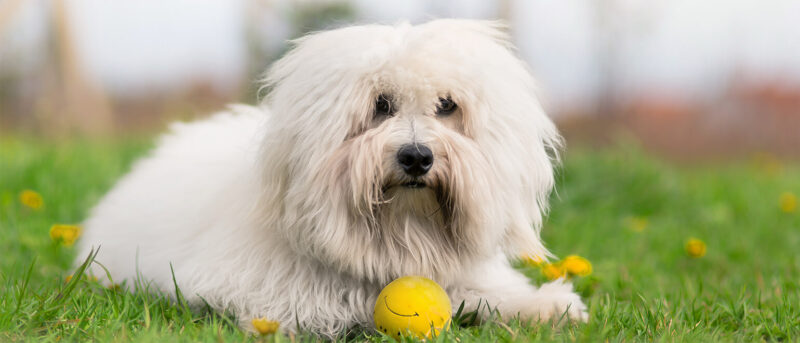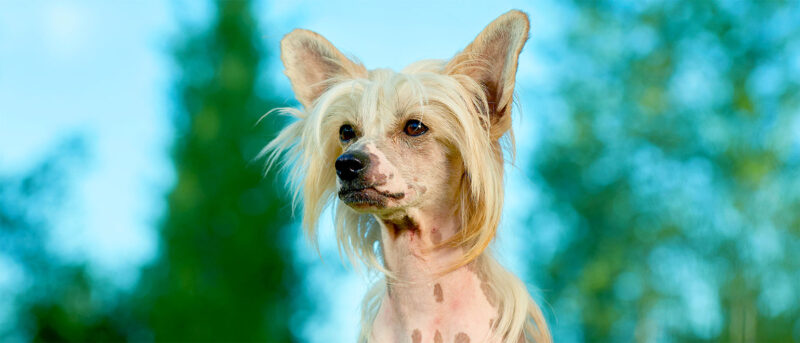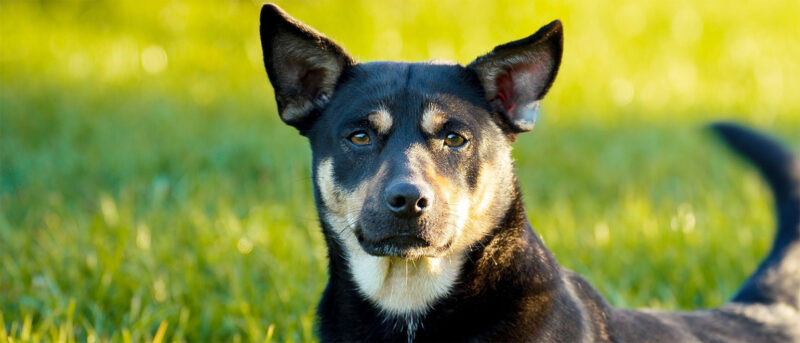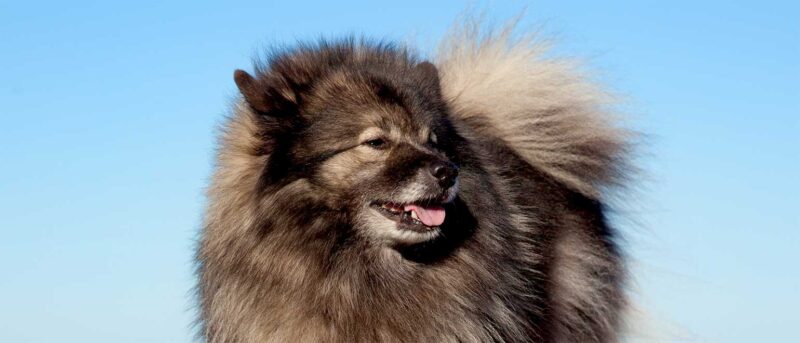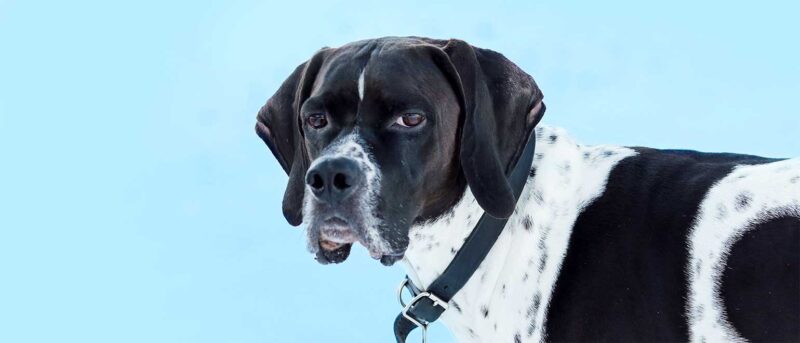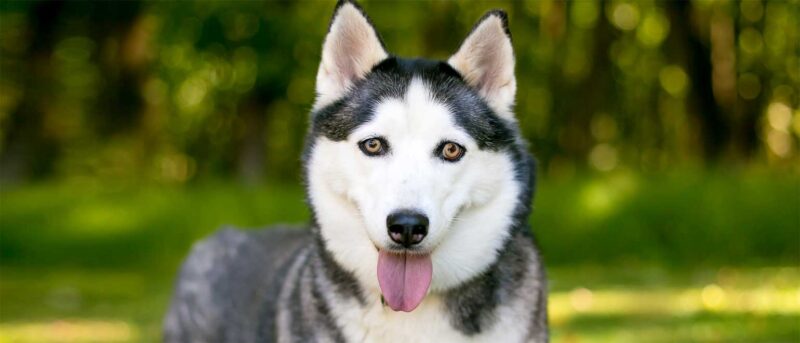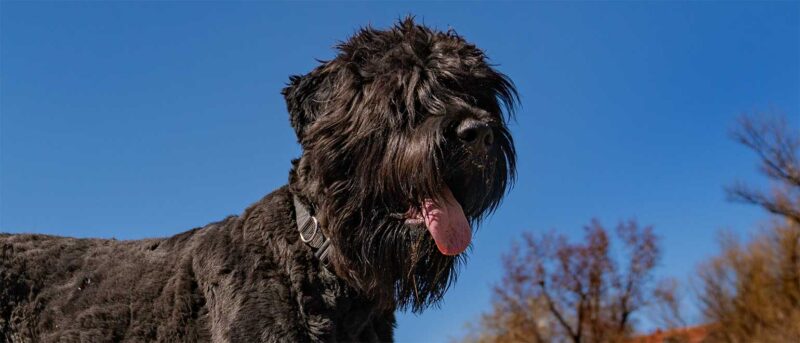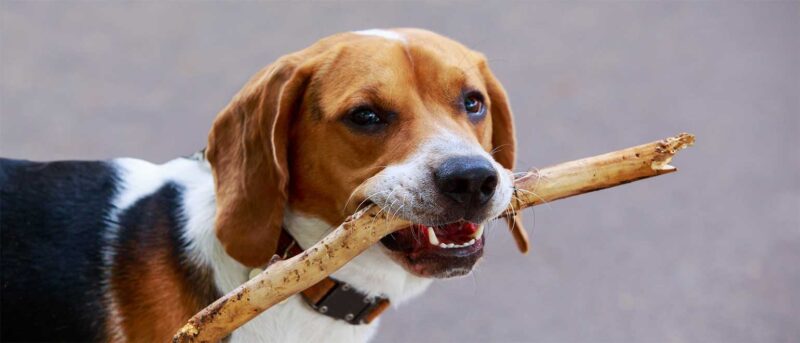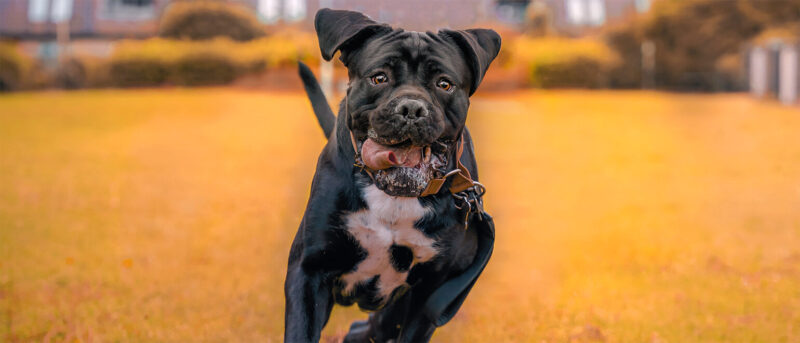The Tibetan Terrier: A Complete Guide To This Energetic Dog
Looking to bring some sunshine into your home with a loyal friend? Well look no further than the Tibetan Terrier! This charismatic pup might be just the companion you’re looking for! Despite the name, Tibetan Terriers aren’t part of the terrier group, but they are exceptional family pets. Known for their gentle nature, they are […]
Looking to bring some sunshine into your home with a loyal friend? Well look no further than the Tibetan Terrier! This charismatic pup might be just the companion you’re looking for!
Despite the name, Tibetan Terriers aren’t part of the terrier group, but they are exceptional family pets. Known for their gentle nature, they are especially great with children, showering them with affection. In ancient Tibetan monasteries, these dogs were cherished as symbols of good luck. So be sure to give your pup extra treats if you experience a lucky streak!
Whether you’ve recently welcomed a Tibetan Terrier into your home or are considering adoption, this guide will help you create a loving and nurturing environment for your new pet.
Tibetan Terrier Characteristics (Physical)
Tibetan Terriers are part of the non-sporting breed group, known for its diversity in physical traits. One of their most striking features is their long, elegant coat, which immediately catches the eye. Beneath that luxurious fur lies a well-built dog, admired by enthusiasts around the world.
To ensure you’re adopting a purebred Tibetan Terrier, it’s important to check that the dog meets the breed standards set by the American Kennel Club (AKC). Familiarizing yourself with these characteristics can also help you identify if a mixed-breed dog shares any traits with the Tibetan Terrier.
Head: Tibetan Terriers have black noses and eyes, which are protected by long eyelashes. Their jaws are even, complemented by a distinctive beard of hair. The hair on the top of their head falls forward and can be styled with trims, bows, or clips. So fashionable!
Body: The Tibetan Terrier’s neck is well-proportioned to its head, and its compact body features well-sprung ribs and a level topline.
Limbs: The front legs are straight and well-muscled, providing strong support. The hind legs are slightly longer than the front and are equally strong. Tibetan Terriers have large, round, thickly padded paws that give them excellent traction.
Tail: Their tail is long and feathered with hair, curving over the back and slightly leaning to one side.
Tibetan Terrier Dog Breed Size
The Tibetan Terrier is a medium-sized dog, making it the perfect roommate for apartment living. They typically stand 14 to 17 inches tall at the shoulder and weigh between 20 to 24 pounds.
Males are usually a bit larger than females. The size of a Tibetan Terrier puppy can vary based on factors like genetics, diet, and exercise. It’s important to monitor their food and treat intake to ensure they maintain a healthy weight.
Tibetan Terrier Personality
The Tibetan Terrier is a sought-after breed, not just for its striking appearance but also for its wonderful temperament. While every dog develops its own unique personality from puppyhood to its senior years, Tibetan Terriers are known for certain traits that make them particularly appealing as pets.
If you adopt a Tibetan Terrier from a rescue, it may initially be a bit shy. But don’t worry, they’ll soon break out of their shell as it grows more comfortable and confident with its new family. Here are some common characteristics of this delightful breed.
Gentle and Kind
Tibetan Terriers have a warm, affectionate nature and love being close to their families. They are friendly pets that bond easily with both children and seniors.
Their strong attachment to their families means they can experience separation anxiety if left alone for too long. If you’re planning a long trip, it’s important to make arrangements, such as hiring a dog sitter or taking your dog to a daycare, to ensure they don’t feel lonely. Tibetan Terriers are also sociable and tend to get along well with other dogs and pets.
Watchful
Centuries ago, travelers crossing Tibet’s snowy plateaus relied on Tibetan Terriers to keep watch over their caravans while they slept. Even today, these dogs continue to serve as vigilant protectors in many homes, often choosing spots with a good vantage point so they can see everything coming their way.
Tibetan Terriers tend to be aloof around strangers, making them better suited as watchdogs than guard dogs. But that doesn’t mean they won’t act. They won’t hesitate to bark if they detect someone or something approaching their territory, ensuring their family is always aware of what’s happening around them.
Playful and Adventurous
Tibetan Terriers are known for their fun-loving nature and their eagerness to please their families. These active dogs make excellent companions for walks and long hikes.
Their tolerance for cold weather means they enjoy playing outside in the snow, making those snow days with the family even more fun. Playtime isn’t just enjoyable for Tibetan Terriers—it’s also a great way for them to get the exercise they need.
Tibetan Terrier Dog Breed Exercise
The more exercise your Tibetan Terrier gets, the happier and more well-behaved it will be. Dogs that don’t have enough opportunities to burn off energy and stay mentally stimulated are more likely to develop unwanted behaviors – like chewing up those expensive pillows you just bought!
A study by the British Veterinary Association found that dogs who don’t get enough exercise are more prone to stress. A couple of 15-minute walks or engaging in dog sports throughout the day can help meet your Tibetan Terrier’s physical activity needs. Puzzle toys that dispense treats are also great for keeping your dog mentally stimulated.
Here are some ways to keep your dog active:
- Walking
- Running
- Hiking
- Fetch
- Tug-o-War
- Dog Sports
Training is another excellent form of exercise that also strengthens the bond between you and your dog.
Tibetan Terrier Training
Training your Tibetan Terrier is essential if you want your pup to be on its best behavior. Positive reinforcement is highly recommended, with treats being a great motivator during training sessions.
Tibetan Terriers are intelligent and tend to be easier to train compared to some other breeds, but patience is key. Remember, dogs continue to learn throughout their lives, so the more time and effort you invest in training, the better your dog’s behavior will be.
It’s important to establish yourself as the authority figure so your Tibetan Terrier takes training seriously. However, avoid physical punishment or yelling, as this can make your dog fearful of you. Instead, use clear body language and vocal cues to communicate which behaviors are unacceptable.
Socialization
To help your Tibetan Terrier become more comfortable around people, socialization training is key. This training will make your dog more at ease with guests, your children’s friends, and even delivery people.
For puppies, the crucial period for socialization is between three weeks and five months of age. During this time, it’s important to gradually introduce your puppy to new people, pets, sounds, and sights. Since Tibetan Terrier puppies are naturally curious, this gradual exposure will help prevent them from becoming overwhelmed.
For older Tibetan Terriers, daily walks are an excellent way to improve socialization. Regular walks help reduce leash aggression and expose your dog to a variety of new people and pets, making it easier for them to interact positively with their surroundings.
Obedience Training
Without obedience training, many dogs may misbehave and try to take charge of their family. Teaching your Tibetan Terrier puppy basic commands like “sit” and “come” can significantly improve its behavior around family members and friends, and help you avoid any unwanted issues.
Once your dog has mastered these basic commands, you can move on to teaching more advanced tricks, such as rolling over or shaking hands with its paw. And who says you can’t teach an old dog new tricks? Even a senior Tibetan Terrier can pick up new commands with the right training and a little patience!
Crate Training
Since Tibetan Terriers love spending time indoors, crate training is essential for both potty training and giving your dog a personal space. A crate can provide a safe haven for your dog during loud noises like fireworks or thunderstorms.
To help your puppy or senior dog feel more comfortable with the crate, use positive reinforcement. This can include treats and praise to create a positive association. However, avoid leaving your Tibetan Terrier in the crate for extended periods, as this can lead to anxiety due to lack of exercise and human interaction.
Dog Competitions
Training your Tibetan Terrier for dog sports or pageant competitions is an excellent way to provide both physical exercise and mental stimulation. If your dog has excelled in obedience training, participating in obedience competitions can be a fantastic opportunity to showcase its skills and earn awards.
Tibetan Terrier Dog Breed History
Tibetan Terriers have a history that dates back over 2,000 years to when Buddhist monks kept them in the remote monasteries of the Himalayas. These dogs were valued for their roles as watchdogs, companions, and symbols of good luck. Known as the “Holy Dog of Tibet,” they hold a special place in Tibetan culture.
Traditionally, Tibetan Terriers were considered so valuable that they were given as esteemed gifts rather than sold. Locals referred to them as “Tsang Apso” or “Dokhi Apso.” The breed remained relatively rare until they were introduced to the western world. In 1922, a British doctor was gifted a white and gold-coated Tibetan Terrier by a Tibetan man after successfully operating on his wife. The doctor’s wife received another puppy, and they were brought to England, where she began breeding Tibetan Terriers.
The first litter born in England was initially registered as Lamleh Terriers. By 1930, the Kennel Club of India officially recognized the breed and named it Tibetan Terrier due to its resemblance to terriers. The United Kennel Club followed suit in 1937.
Today, Tibetan Terriers are cherished pets around the world and frequently appear on television during dog shows and competitions.
Common Health Problems Found in the Tibetan Terrier
Tibetan Terriers typically live between 12 to 15 years. To help ensure your dog enjoys a long and healthy life, it’s important to be aware of common health issues associated with the breed.
Sight Issues
Dogs, including Tibetan Terriers, see in a blue-yellow spectrum but have excellent vision that enables them to perceive depth and see well at night. However, some Tibetan Terriers may be prone to specific vision-related health issues.
One such condition is Progressive Retinal Atrophy (PRA), where the photoreceptor cells in the retina deteriorate over time, eventually leading to blindness. Another condition, Lens Luxation, can also result in blindness. Despite these challenges, a blind dog can still lead a fulfilling life by relying on its other senses and with support from its owner.
Limited Movement
Tibetan Terriers are energetic dogs that rely on their mobility to stay active. However, some may develop health issues such as hip dysplasia, which affects the bones that connect to the hip socket.
Another condition to be aware of is Patellar Luxation, where the kneecap becomes dislocated. Both hip dysplasia and Patellar Luxation can restrict your dog’s movement but can be managed and treated with veterinary care. Regular check-ups and prompt attention to any symptoms can help ensure your Tibetan Terrier remains as active and comfortable as possible.
If your Tibetan Terrier is experiencing mobility issues, CBD oil may be a great tool for helping alleviate some of their pain and discomfort.
Skin Conditions
Tibetan Terriers have a long coat that can easily become tangled and matted, which can be uncomfortable for your dog to have untangled. Additionally, some dogs may have allergies that cause itchy skin.
Ticks, fleas, and mites can also infest your dog’s double coat, leading to dry skin, swelling, and redness. Regular grooming and using the right shampoo can help keep your dog’s skin healthy and protected.
How to Care for a Tibetan Terrier
Tibetan Terriers are balls of energy known for their boundless love and affection, and they deserve the best care in return. Ensure your dog has constant access to food, water, and a comfortable place to sleep. Regular grooming and meeting its daily exercise needs are essential for keeping your Tibetan Terrier happy and healthy.
These dogs are excellent jumpers, so it’s important to have a high fence to prevent them from running off. Tibetan Terriers thrive indoors where they can interact with their family. Keeping them outside in isolation can lead to unhappiness.
To safeguard your dog’s health, ensure it is up-to-date on vaccinations. If your Tibetan Terrier does manage to escape, microchipping is a reliable way to help locate it quickly.
Nutrition and Feeding for a Tibetan Terrier
The amount of food your Tibetan Terrier needs each day depends on factors such as age, size, and metabolism. On average, you should feed your dog between one and one-eighth to one and one-half cups of dry dog food, divided into two meals daily.
Opt for all-natural dog food that is rich in protein, nutrients, and vitamins to support your dog’s health. Avoid brands with low-quality ingredients like artificial flavors, mystery meat proteins, and unsuitable preservatives. While Tibetan Terriers can enjoy some human foods, be cautious as not all are safe. Foods like chocolate, garlic, and onions can cause gastrointestinal issues.
For feeding and watering, choose a properly sized ceramic bowl instead of plastic. Plastic bowls can harbor bacteria and may be chewed on by some dogs. Always provide fresh water in the bowl, avoiding tap water that might contain harmful minerals.
Coat Color And Grooming
The Tibetan Terrier is known for its striking double coat, which is a favorite among dog enthusiasts. Although maintaining this coat requires time and effort, regular grooming is essential to keep it looking its best.
The coat is long and can be wavy or straight, but it should not touch the floor. It features a soft undercoat that provides protection in snowy weather. Additionally, the Tibetan Terrier’s fur is hypoallergenic, which means it may be less likely to trigger allergies in people.
Tibetan Terriers come in a variety of coat colors, including white, black, tricolor, gold, silver, and more. The range of colors can vary from litter to litter. Here’s some tips on how to keep your Tibetan Terrier well-groomed:
Brushing and Bathing: Regular brushing is crucial to manage a long coat. Depending on the length, you may need to brush your dog daily or a few times a week to remove loose hair. Bathing once a month will help your pup maintain its coat’s health and shine.
Trimming: To ensure your dog’s mobility and comfort, check its nails monthly and trim them as needed. For haircuts, you can either trim your dog’s fur yourself or seek professional grooming services.
General Hygiene: Long-haired dogs can develop water stains around their eyes and mouth, which can be wiped away with a soft cotton ball. Regularly clean your dog’s eyes and ears to remove dirt and debris. Additionally, brushing your dog’s teeth regularly helps prevent dental issues later in life.
Children And Other Pets
Tibetan Terriers are generally friendly and adaptable, making them great companions for households with children and other pets. But don’t forget that proper socialization training is key to ensuring your dog behaves well around friends and other animals.
If you have young children, it’s important to teach them how to interact with the dog gently to avoid accidental injury or irritation. Additionally, while some people treat houseplants as part of the family, be aware that certain plants can be mildly toxic to dogs. To be safe, keep plants out of reach to prevent any mishaps.
Although Tibetan Terriers are wonderful pets, it’s crucial to supervise interactions between your dog and small children for safety. When introducing a new dog to your home, gradually involve everyone in playtime to help the dog adjust without feeling overwhelmed.
Tibetan Terrier Dog Rescue Groups
Tibetan Terriers are a rare breed, but adopting one from a rescue organization can be a great way to bring this unique dog into your home. You may find them in local animal shelters or through specialized rescue groups. When adopting, always choose a rescue organization that can provide documentation on the dog’s behavior and health assessments.
For convenience, you can also search for Tibetan Terriers online. Reputable websites like Petfinder and RescueMe are excellent resources for finding dogs available for adoption and connecting with trustworthy rescue organizations.
Tibetan Terrier Dog Breed Organizations
Tibetan Terrier puppies are incredibly adorable but don’t come cheap! If you’re looking for a purebred, you may need to be patient and save up until the right one becomes available.
A great way to find a reputable breeder is through the Tibetan Terrier Club of America. Their website offers a breeder referral program that connects you with breeders who adhere to strict, transparent breeding guidelines set by the Club.
While many professional breeders can be found online, it’s important to be cautious and avoid those with unethical practices. Always request health assessments and certifications for the puppy to ensure you’re getting a healthy dog.
More About the Tibetan Terrier
Owning a dog is a significant responsibility, but it’s also incredibly rewarding. Choosing a Tibetan Terrier as your new family member is a fantastic decision, as these dogs bring joy and companionship for years to come.
With the information in this guide, you’re well-prepared to care for your Tibetan Terrier. Feel free to revisit this guide whenever you need a refresher. For more information on dog care and other breeds, explore the additional resources available on Penelope’s Bloom!







